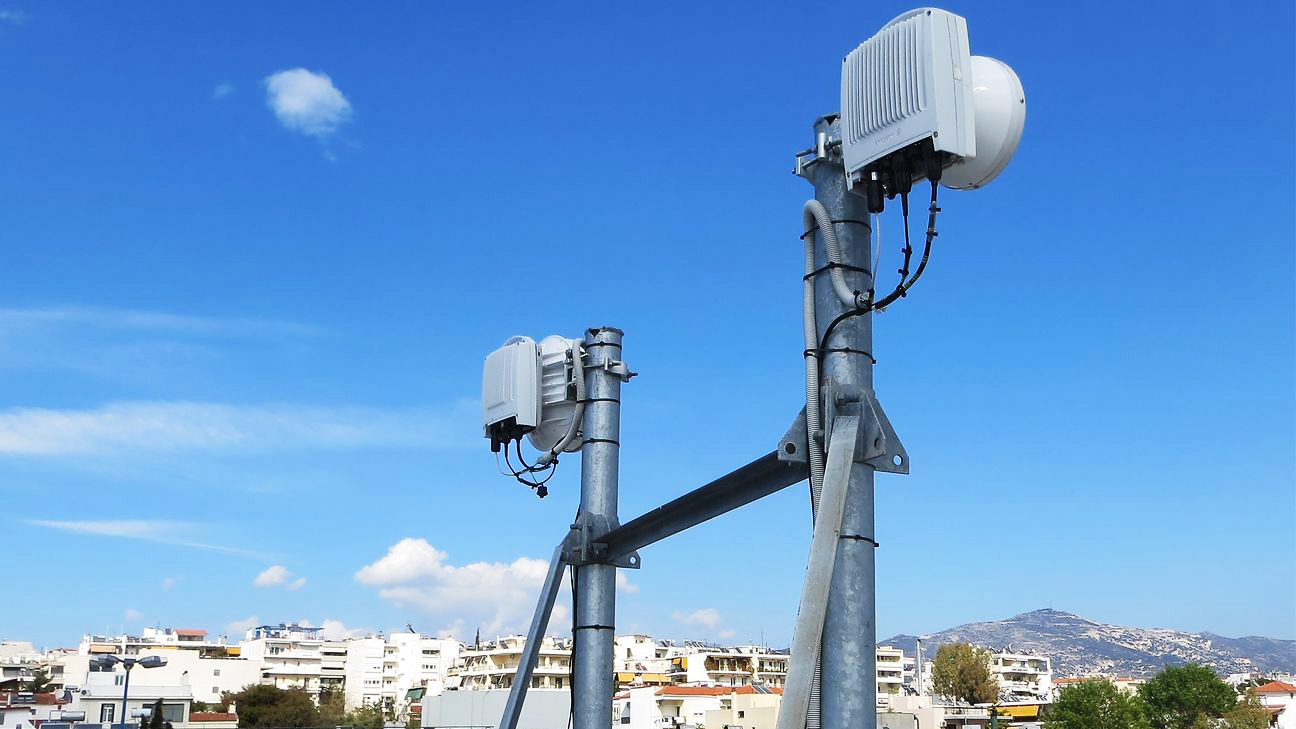W-band is used to achieve 10Gbps microwave 5G backhaul in a world-first
Ericsson has partnered with Deutsche Telekom and Cosmote to trial and test microwave 5G backhaul, using spectrum in the W-band for the first time.

One of the most challenging tasks MNOs face is installing a backhaul connection to the core network, when there isn’t the option to run fibre or copper cable to 5G towers.
And in a recent trial at Deutsche Telekom’s Mobile Backhaul Service Center in Athens, Deutsche Telekom, Cosmote and Ericsson have successfully used frequency bands beyond 100GHz, also known as as W-band, for multi-gigabit wireless backhaul capacities for 5G and 6G.
Microwave frequency bands such as these, although having extremely poor general coverage, are superior to mmWave when focusing a narrower beam, which can create a point-to-point connection between sites, and can deliver speeds of up to 10Gbps over distances up to six miles.
“The results of our innovation trial with Ericsson confirm the feasibility of using higher frequency bands with wider channels."
Dr. Chalkiotis, Deutsche Telekom.
“The evolution towards future-proof, cost-efficient and high-capacity wireless backhaul networks will play an important role to accommodate growing traffic demand, increased site location (including small and pico cells) and extend 5G services in the future,” said Dr. Konstantinos Chalkiotis, vice president of 5G solutions, access and home networks at Deutsche Telekom. “The results of our innovation trial with Ericsson confirm the feasibility of using higher frequency bands with wider channels as another solution in our portfolio to deliver high capacity and high performance backhaul for our customers in the 5G era. We hope soon to see those solutions brought into real production in a cost-efficient manner.”
Joint W-band trial
The joint field trial used W-band microwave backhaul over a 1.5km range, with telecom grade availability, using pre-commercial equipment. And the trial recorded speeds of 5.7Gbps over the 1.5km distance, hitting 10Gbps for 1km hops, proving that W-band (92GHz -114GHz) is equal to E-band (70/80GHz), which is currently the only frequency band delivering 10Gbps wireless backhaul for 5G.
“Ericsson has a proud history of innovation with Deutsche Telekom,” said Jonas Hansryd, research manager, microwave systems at Ericsson. “Two years ago, we showed for the first time the possibility to transport more than 100Gbps over a kilometer distance using millimeter wave bands. In our latest joint project, we continue on that path showing the ability to evolve today’s wireless transport by supporting additional, high-capacity backhaul spectrum for 5G and future 6G.”
SIGN UP FOR E-MAIL NEWSLETTERS
Get up to speed with 5G, and discover the latest deals, news, and insight!
- Why 5G small cells are vital for mmWave 5G
- Get updates on the hottest 5G stocks
- Discover the truth behind 5G dangers
- 5G towers: everything you need to know
Dan is a British journalist with 20 years of experience in the design and tech sectors, producing content for the likes of Microsoft, Adobe, Dell and The Sunday Times. In 2012 he helped launch the world's number one design blog, Creative Bloq. Dan is now editor-in-chief at 5Gradar, where he oversees news, insight and reviews, providing an invaluable resource for anyone looking to stay up-to-date with the key issues facing 5G.

